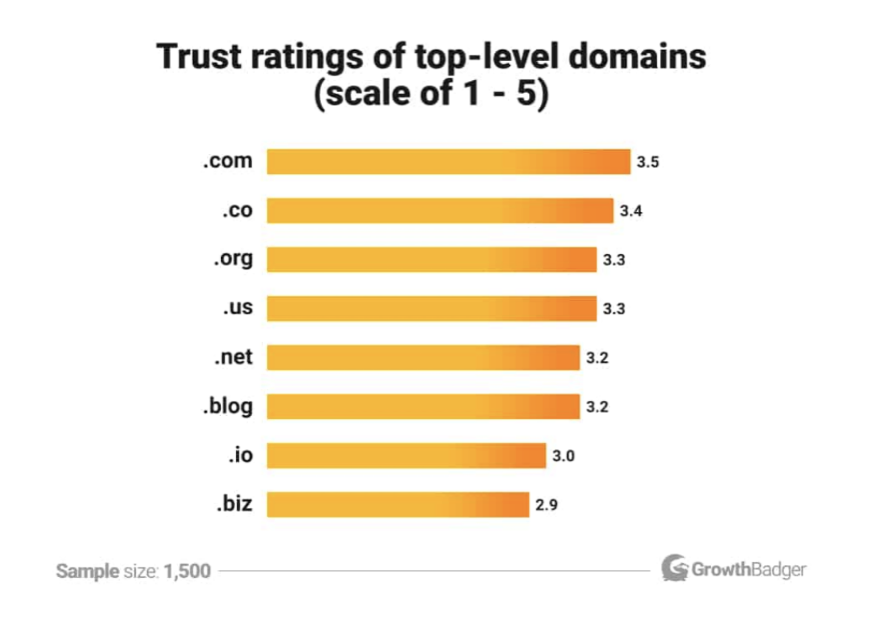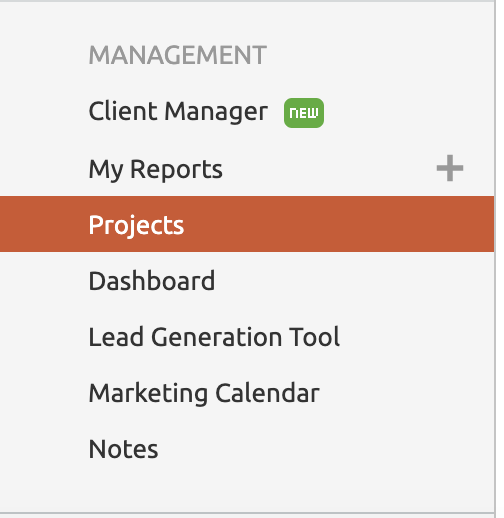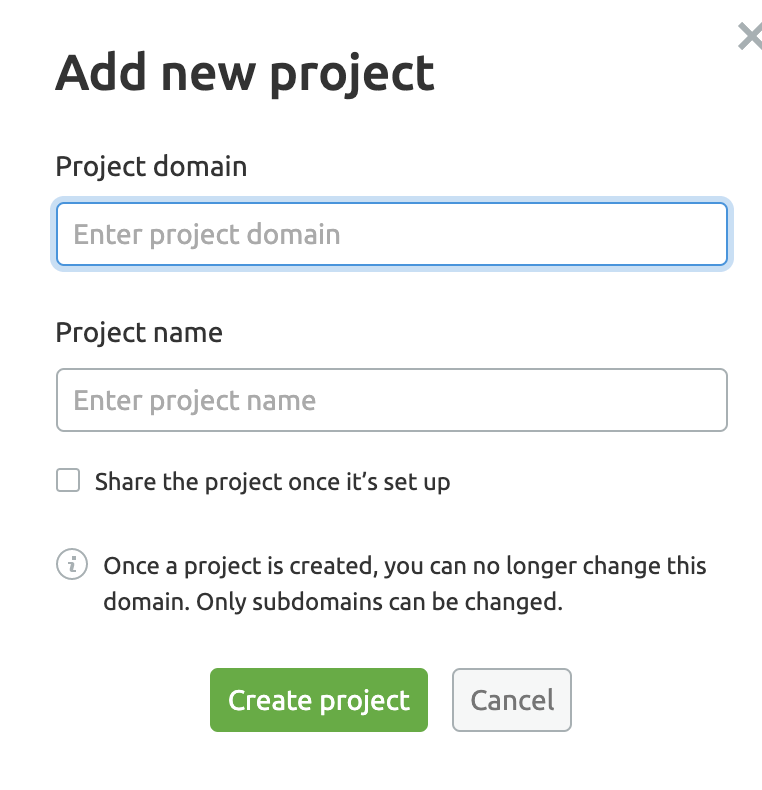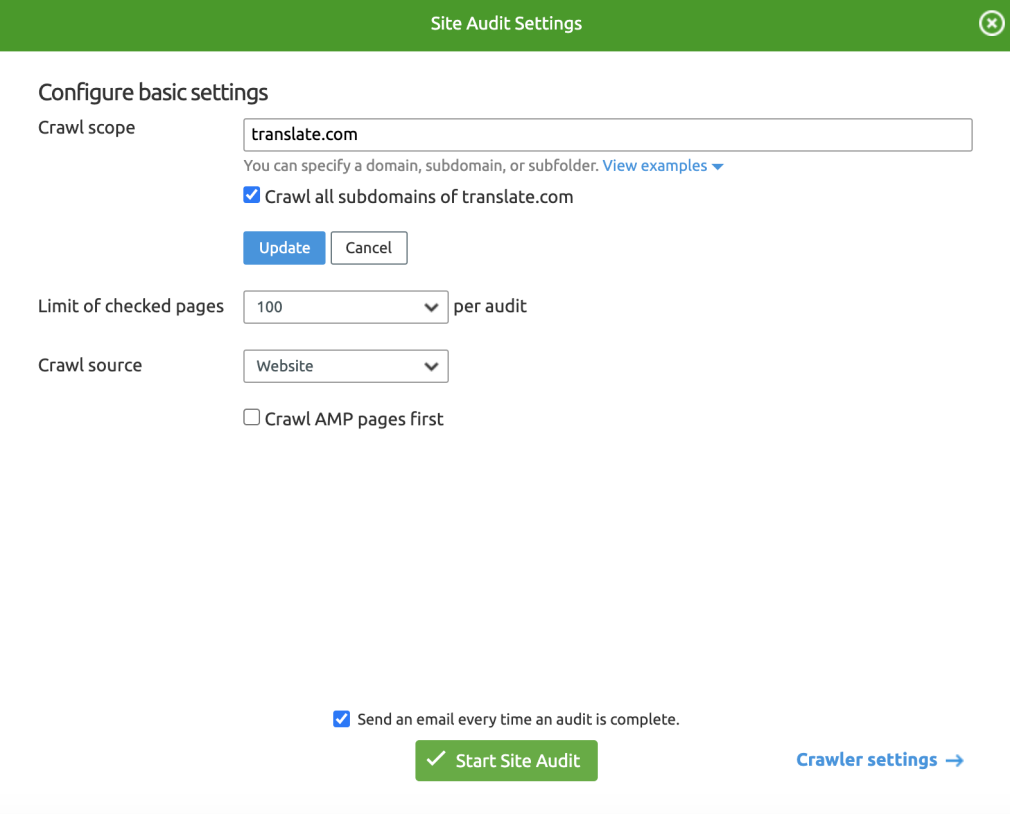If you have a website, you already use a top-level domain. This important element makes your website accessible and visible, and it's one of the first reflections of your online brand.
Still, you may not be sure what a top-level domain is, or if it can impact your site rankings. In this guide, we’ll explore top-level domain types, review some popular TLD examples, and offer tips to ensure your TLD is doing the best job possible for your site.
What is a Top-Level Domain? Do TLDs Have an Impact on SEO? Types of Top-Level Domains Generic Top-Level Domain – gLTD Sponsored Top-Level Domain – sTLD Country Code Top-Level Domain – ccTLD Selecting the Best TLD for Your Site Use Semrush Site Audit Tool to Identify Risky TLDsWhat is a Top-Level Domain?
A top-level domain (or TLD) is the last section of a root domain. For us at Semrush, that’s the .com that comes after our name.
Every website has an extension like this, and it can vary from something simple like .com or .net to something more customized like .dog or .nyc.
The kind of TLD you have can offer users an idea of the services your website provides, where you are based, and the sector in which you work.
Here’s how it actually appears on a search engine results page:


Do TLDs Have an Impact on SEO?
No, TLDs do not have a significant impact on your rankings.
Google confirmed in 2015 that using a custom TLD with keywords would “not give any advantage or disadvantage in search.”
In our post on TLDs and SEO, we noted that although a top-level domain won’t directly impact your ranking on Google, it can affect what people think of your brand (and therefore, your click-through rate.)
It’s a matter of trust. To users, some top-level domains seem more legitimate than others.
Studies have shown that .com and .net, for example, are among the most trustworthy TLDs to use for your website.

This means you could get more clicks with a generic top-level domain name like .com than you could with a less common one.
So, even if TLDs don’t directly impact your rankings, they can impact people’s perceptions of your website and lead to a higher or lower click-through rate.
Types of Top-Level Domains
The Internet Corporation for Assigned Names and Numbers (or, the IANA) groups TLDs into three official categories: gTLDs, sTLDs, and ccTLDs. You can find a list of all active top-level domains in the IANA Root Zone Database.
Let’s have a closer look at these TLD types:
Generic Top-Level Domain (gLTD)
These are probably the TLDs you’re used to seeing. Generic top-level domains are also what users expect to see. Some popular gTLDs are:
.com .net .orgWhile these might be known as “generic,” they can still tell you a lot about what kind of site you’re visiting. “.com” is a stand-in for "commercial, “net” stands for “network,” and org is short for “organization.”
Some companies have made their gTLDs even more specific. In 2011, companies and organizations were allowed to register their own gTLDs for the first time, which is why you can now visit sites under:
.google .amazon .appleWe’ll cover country-based top-level domains further in the ccTLD section, but we’ll note here that geographic gTLDs (or GeoTLDs) do exist. These gTLDs are associated with a particular geographical area. They aren’t geotagged automatically like ccTLDs are. GeoTLDs include extensions like:
.berlin .amsterdam .parisGeographical gTLDs are handy because they indicate the city you’re based in or the area you serve. They can also make you more appealing to a local readership.
Sponsored Top-Level Domain (sTLD)
Sponsored top-level domains are TLDs that have been specifically sponsored by groups like businesses and governments. Some examples include:
.gov .museum .eduThere are far fewer sTLDs out there than gTLDs. The IANA database currently lists over 1200 TLDs as “generic” and only 14 as “sponsored.” This is partly because there are some fairly strict criteria you must meet to use an sTLD.
Much like generic top-level domains, sponsored top-level domains will often give you an indication of the industry in which the site operates. For example, “.edu” is short for “education,” while “mil” is short for “military.”
Generally speaking, websites with sTLDs can help users find official information quickly and are considered trustworthy for this reason.
Because of this, not every website can earn an sTLD. You have to apply for a sponsored top-level domain and ensure you meet the criteria before you can use one for your site.
Country Code Top-Level Domain (ccTLD)
Our last category is country code top level domains. These are two-character top level domains that are specific to countries. Examples include:
.ca (Canada) .br (Brazil) .de (Germany) .fr (France) .ie (Ireland) .in (India) .uk (United Kingdom) .us (United States)We counted over 300 ccTLDs currently in operation, which puts them neatly between gTLDs and sTLDs in the frequency of their usage.
A big benefit of using a country code top-level domain is that it enables customers to see the country you’re based in and serve. It can help Google geotarget your site.
However, country code top-level domains only target countries, not languages (and even then, languages are only targeted one at a time.)
For example, if a company based in the United States has a .us TLD but wants to serve a Spanish-speaking audience in addition to their English-speaking one, they’ll need to do some additional work to create and optimize content in multiple languages.
To learn more about translating your website for different languages, check out our post on Multilingual SEO.
Selecting the Best TLD for Your Site
Top-level domains indicate your site’s purpose and can help attract your target audience. If you want to target users by country, you may need a country code top-level domain. If your audience is global, then a generic top-level domain might be the way to go.
You can measure whether your site’s TLD works for your business with a site audit. Site audits help you understand the technical SEO errors that are causing you to lose out on organic traffic.
You can also identify what might be causing you to drop in Google’s rankings, including (if applicable) your site’s TLD.
Our Site Audit tool can track the performance of any international domain, and works with many top-level domain types.
When working with the Site Audit tool, you can:
run a Project audit: this works best for sites that separate languages by subdomains (e.g., fr.semrush.com) or subfolders (e.g., semrush.com/en). For example, if you want to target both the English and Spanish-speaking audiences residing in one country, you can audit your domain and the language-specific subdomain. run a Multiple Projects audit: Multiple Projects are ideal for sites with language-specific TLDs (e.g. semrush.com, semrush.fr, semrush.es). If you want to target your English-speaking US audience and your Spanish-speaking audience in Spain, creating multiple projects will allow you to crawl each site thoroughly.To create a project, open your Semrush dashboard. Under “Management,” select “Projects:”

Create a new project by selecting the “Add New Project” button on the upper right of your screen:
If your website separates languages by subdomain, enter in your root domain here. Once your project is set up, navigate to the Site Audit tool from your project dashboard.

The Site Audit tool will automatically crawl your site’s subdomains unless you change its settings:

If you have multiple language-related TLDs, you’ll need to create a project for each one. In this case, enter in each of your language-specific domains (eg. semrush.es, semrush.fr, etc), then navigate to each project's dashboard to launch the Site Audit tool.
Final THoughts
Even though TLDs don't directly affect your Google ranking and SEO, it’s important to choose a top-level domain that attracts the right traffic and benefits your site.
If you want to check your site's overall performance and determine whether your root domain is working for you, try running a site audit. Selecting the right TLD is part of setting up your website for success - explore your options and think ahead!
Innovative SEO services
SEO is a patience game; no secret there. We`ll work with you to develop a Search strategy focused on producing increased traffic rankings in as early as 3-months.
A proven Allinclusive. SEO services for measuring, executing, and optimizing for Search Engine success. We say what we do and do what we say.
Our company as Semrush Agency Partner has designed a search engine optimization service that is both ethical and result-driven. We use the latest tools, strategies, and trends to help you move up in the search engines for the right keywords to get noticed by the right audience.
Today, you can schedule a Discovery call with us about your company needs.
Source:





